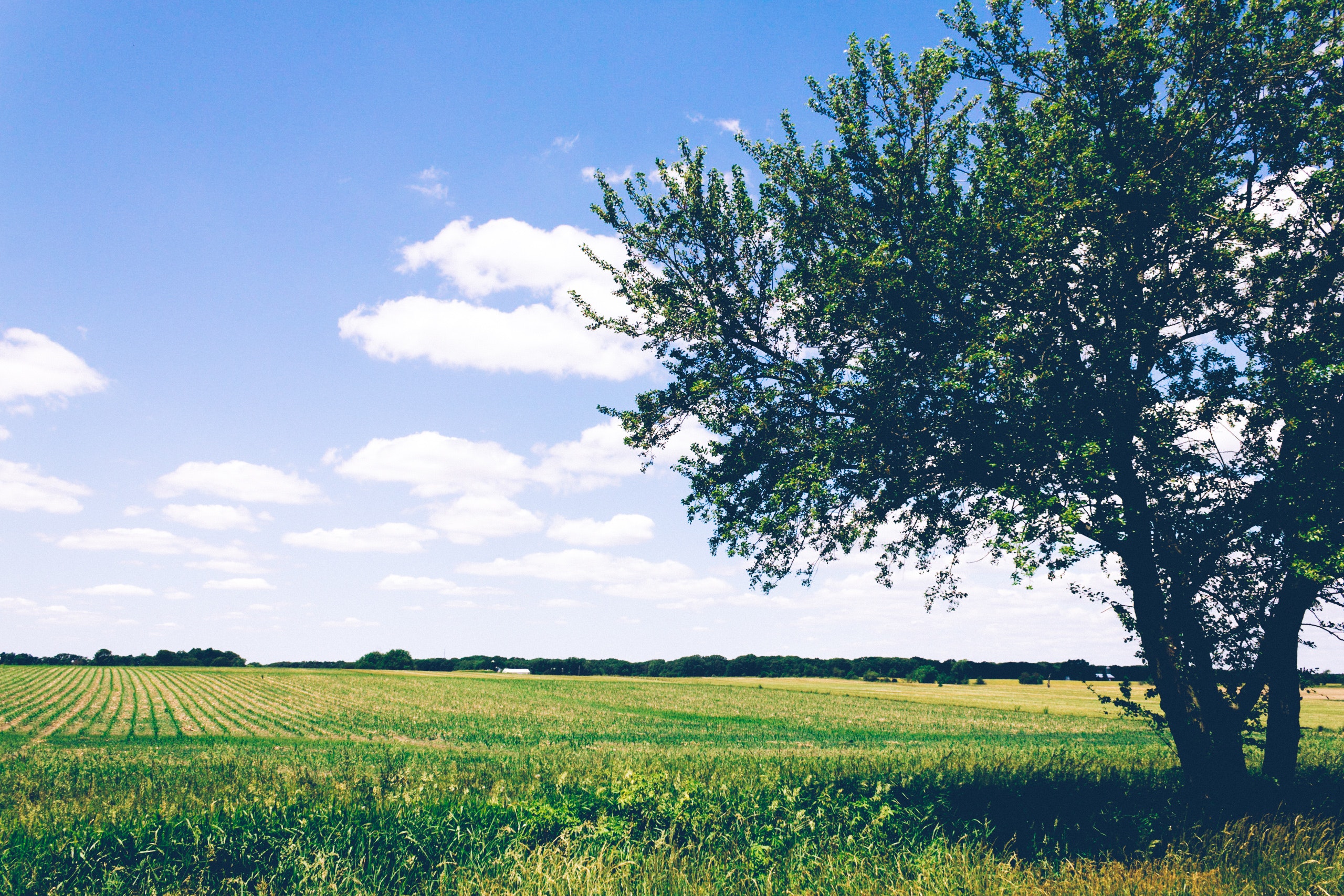
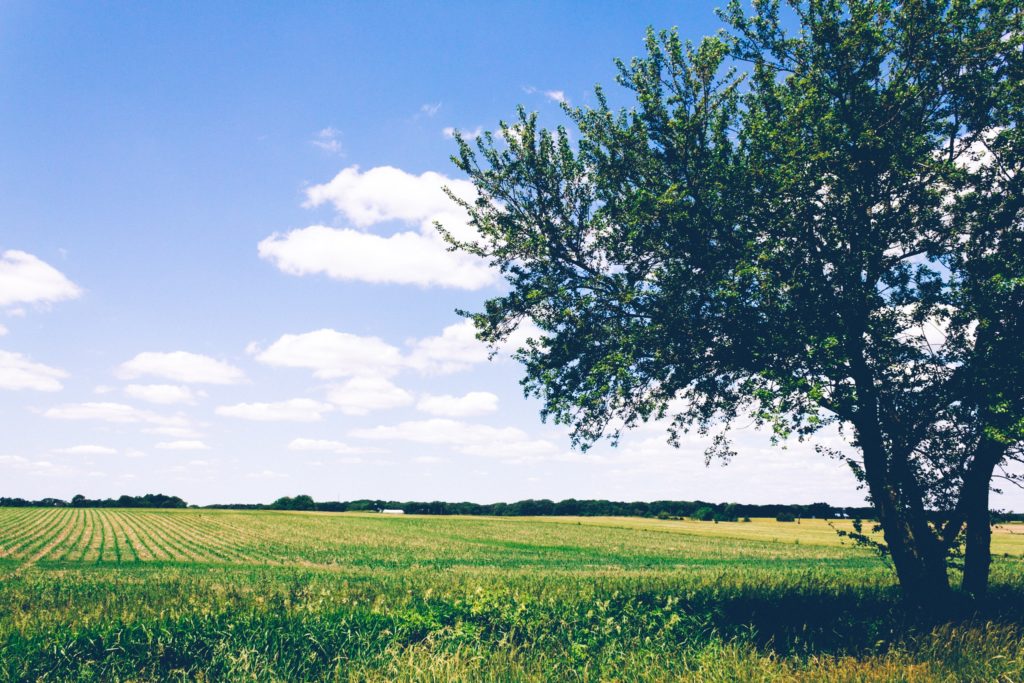
The word sustainability carries quite a bit of weight in the world of agriculture. More and more, farmers are making innovative choices to maintain sustainable, profitable farmland while helping to protect the environment from agricultural wear and tear.
Strategically placed, well designed soil buffers that protect the environment and preserve soil nutrients are essential to a farm’s long-term success. Here, we review some of the most common soil buffers in the agricultural industry.
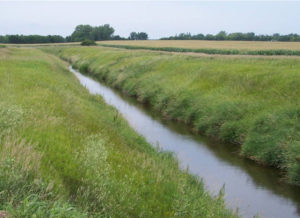 Riparian Buffer and Filter Strips
Riparian Buffer and Filter Strips A riparian buffer by definition can be complex, but the short story is that they are strips of vegetative land planted near water sources on a plot of farmland. These areas follow the flow of the water source, often establishing a natural property line.
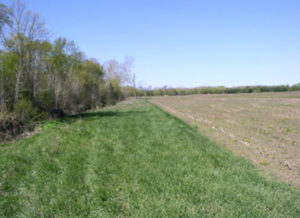
Filter strips are strategically placed grasslands, that provide filter between the farmland and the surface water source to reduce contamination of the water.
Photo courtesy Allegan Conservation District
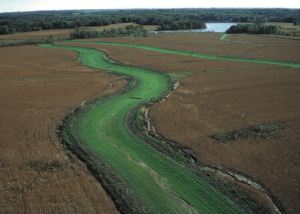 Grassed Waterways
Grassed WaterwaysIntentionally planted natural-ditch areas land, grassed waterways are wide, shallow channels that allow water to move through farmland. Grass in these depressions slows water flow and helps prevent against erosion.
Photo Courtesy National Farmers Union
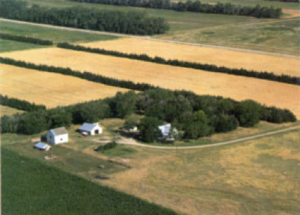 Shelterbelts, WindBreaks, and Living Snow Fences
Shelterbelts, WindBreaks, and Living Snow FencesShelterbelts, windbreaks, and living snow fences are all considered when wind, snow, and heat are a factor. They are typically comprised of one or more rows of trees and shrubs, and partially or completely surround a section of farmland. The belts protect livestock from harsh weather conditions, and help reduce erosion and evaporation. Often times, they serve as a natural property line. (Photo courtesy aftaweb.org)
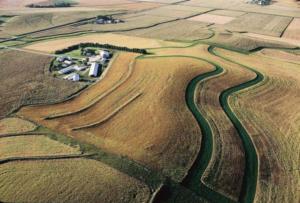 Contour Grass Strips
Contour Grass StripsContour grass strips are planted to run along or perpendicular to slopped farmland for the purposes of reducing erosion and runoff in hilly areas.
Photo by Lynn Betts, USDA Natural Resources Conservation Service. (1999)
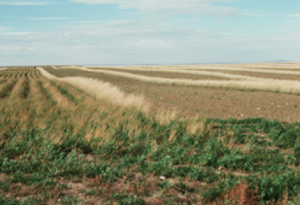 Cross-wind trap strips
Cross-wind trap strips The name says it all; these buffers trap blowing sediment and potential pollutants, and help prevent wind erosion. Comprised of herbaceous vegetation that can stand up to winds, cross-wind traps are planted perpendicular to the direction the wind most often pushes through.
Photo courtesy the Minnesota Department of Agriculture
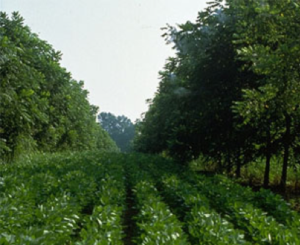 Alley cropping
Alley croppingWith alley cropping, buffers such as trees and shrubs are planted in spaced rows, with crop lying between.
Interestingly, alley cropping is often implemented not just for erosion and contamination prevention, but to better diversify farm products on a single piece of land, and to alter the microclimate for increased crop yield.
Photo courtesy aftaweb.org
A traditional use of soil buffers has been for the natural property line indicators. Need more than a natural fence to contain your farmland or livestock? Consider CBI Pipe & Supply your partner for the most dependable, highest quality fencing solutions.
Website SEO by Pakus Web Services by Pakus Trading Company, LLC.